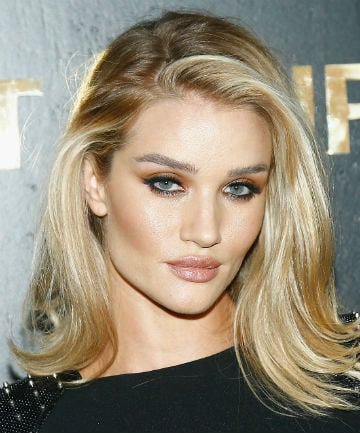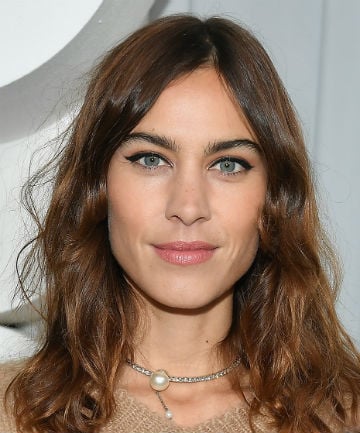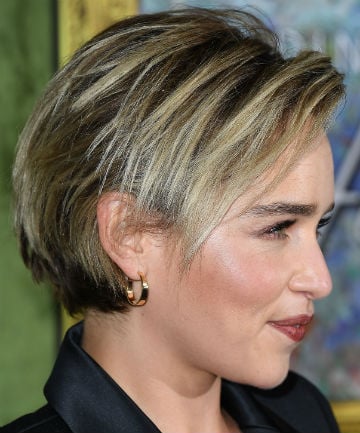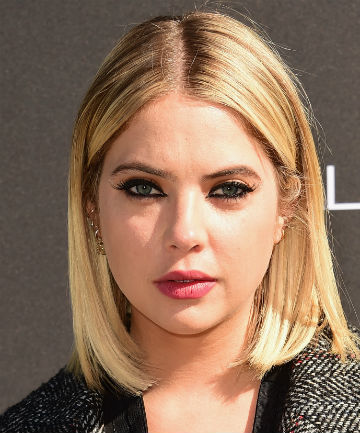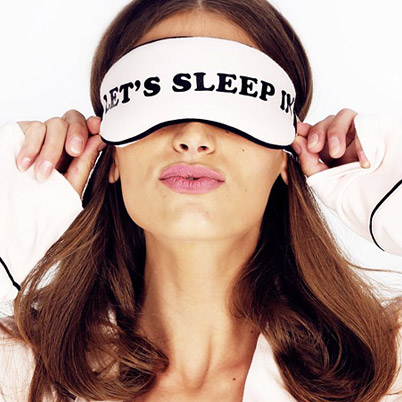OK, you know what type of highlights you want, now how much? Here is where the terms "full" and "partial" come into play. Partial highlights (like Rosie Huntington-Whiteley's) are usually placed around the face for a brightening or framing effect, while full gets you just that — your full head highlighted. "If your hair — including the back — is dark, you will need a full highlighting. If it hasn't been that long since your last highlighting service, or if your hair, especially the back, isn't that dark, just go with a partial."
Still not sure where you land? "A general recommendation is to do a partial at one visit, and a full on the next. It's a good rule of thumb and easier and better for the pocketbook to alternate."
Image via Julien Hekimian/Getty
Still not sure where you land? "A general recommendation is to do a partial at one visit, and a full on the next. It's a good rule of thumb and easier and better for the pocketbook to alternate."
Image via Julien Hekimian/Getty
We've been hit over the head with ombre hair for quite a few seasons now, and it still seems like there's no end in sight.
"Ombre, in hair color terms, refers to going from dark to light. Sarah Jessica Parker I think was the first one — way, way back — with "Sex and the City" — when she just had some roots. Gradually, though, the trend caught on and got more extreme, with women wearing super dark roots, and super blonde highlighted mid-lengths and ends." To get this look, your stylist will lighten the lower half of your hair using traditional highlighting foils, leaving your natural roots and color intact. If you want less of the two-toned, dip-dyed look, then you're probably better off with ...
Image via Jon Kopaloff/FilmMagic/Getty
"Ombre, in hair color terms, refers to going from dark to light. Sarah Jessica Parker I think was the first one — way, way back — with "Sex and the City" — when she just had some roots. Gradually, though, the trend caught on and got more extreme, with women wearing super dark roots, and super blonde highlighted mid-lengths and ends." To get this look, your stylist will lighten the lower half of your hair using traditional highlighting foils, leaving your natural roots and color intact. If you want less of the two-toned, dip-dyed look, then you're probably better off with ...
Image via Jon Kopaloff/FilmMagic/Getty
You know that perfectly sun-kissed color that has become the signature of Giselle and Jessica Biel, to name a few? Often mistakenly referred to as ombre, the technique at play is ombre's fancy French cousin, Balayage. With no foil in sight, stylists physically paint the color directly onto sections of hair for a more natural, blended finish. "This technique is for the female who desires a free-flowing look that is very natural," says Pelusi. And it's not hard to see why. Balayage gets rid of that harsh line between dark and light that has become so prevalent with ombre.
While skipping the strategic foil placement gives you a much more customizable look, it also runs a higher risk of a color horror story. "It is very important to go to someone very skilled in hair color for this particular technique, so as not to damage the hair. Be sure to ask if the hairstylist you patron is skilled in this technique."
Image via Dominique Charriau/Getty
While skipping the strategic foil placement gives you a much more customizable look, it also runs a higher risk of a color horror story. "It is very important to go to someone very skilled in hair color for this particular technique, so as not to damage the hair. Be sure to ask if the hairstylist you patron is skilled in this technique."
Image via Dominique Charriau/Getty
Not to be confused with taking a machete to your hair, slicing refers to a more choppy highlighting technique. Hair slicing is typically used to create a bolder highlighting look than its weaving counterpart. "Slicing describes when a stylist literally takes a slice of your hair — generally 1/8 of an inch thick — as the hair that will be highlighted in a foil. Skilled hairstylists can slice highlights beautifully. With thicker slices, you get highlights that are chunkier and more noticeable.
Image via Steve Granitz/WireImage/Getty
Image via Steve Granitz/WireImage/Getty
Contrary to what the name suggests, this process does not involve hair extensions. Weaving is one of the more complicated highlighting techniques on the market. "Weaving is an even finer highlight pattern (than slicing). If you're looking for a more natural look, weaving is a good place to start."
According to Pelusi, many hairstylists have perfected this technique; so most know how to do it well. "The main rule of thumb is to go to a talented hairdresser whom you trust, and to have a frank discussion about which highlighting technique he/she feels is best for your hair type and your desired result."
Image via Anthony Ghnassia/Getty
According to Pelusi, many hairstylists have perfected this technique; so most know how to do it well. "The main rule of thumb is to go to a talented hairdresser whom you trust, and to have a frank discussion about which highlighting technique he/she feels is best for your hair type and your desired result."
Image via Anthony Ghnassia/Getty


